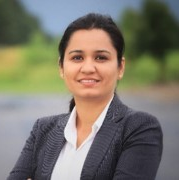Soil Organic Carbon Assessment
A special issue of Environments (ISSN 2076-3298).
Deadline for manuscript submissions: closed (30 April 2023) | Viewed by 23793
Special Issue Editors
Interests: soil health; soil biogeochemistry; carbon sequestration; nutrient management; sustainable agriculture; pasture management
Special Issues, Collections and Topics in MDPI journals
Interests: soil microbial ecology; carbon and nutrient cycling in agroecosystems; soil fertility; soil carbon storage; green-house gas production; agricultural management
Special Issues, Collections and Topics in MDPI journals
Interests: soil organic matter; soil health; soil organic carbon; soil nitrogen management
Interests: soil health; soil biogeochemistry; precision agriculture; uncrewed aircraft systems
Special Issues, Collections and Topics in MDPI journals
Special Issue Information
Dear Colleagues,
Soil organic carbon (SOC) is the largest terrestrial C pool, and it plays a critical role in sustaining soil health. Multiple soil properties and processes are influenced by SOC, such as soil structure, nutrient dynamics, water conservation, and microorganism composition. Land-use conversion and management may result in higher SOC loss and CO2 emission, while improved management strategies can promote SOC sequestration and mitigate greenhouse gas emissions. Thus, assessing SOC in natural and agricultural ecosystems is critical in order to provide insights on ecosystem services influenced by anthropogenic activities.
This Special Issue aims to present original research articles, reviews, and short communications concerning the following topics: (1) Measuring and assessing SOC stocks and characteristics under sustainable agroecosystem management; (2) monitoring and modeling SOC dynamics in natural ecosystems affected by land uses; (3) investigating SOC influenced by microbial processes; (4) plant root–soil interactions and SOC sequestration; and (5) SOC and greenhouse gas emissions influenced by temporal or spatial variability in the environment.
Dr. Sutie Xu
Dr. Virginia L. Jin
Dr. Navreet Kaur Mahal
Dr. Jing Hu
Guest Editors
Manuscript Submission Information
Manuscripts should be submitted online at www.mdpi.com by registering and logging in to this website. Once you are registered, click here to go to the submission form. Manuscripts can be submitted until the deadline. All submissions that pass pre-check are peer-reviewed. Accepted papers will be published continuously in the journal (as soon as accepted) and will be listed together on the special issue website. Research articles, review articles as well as short communications are invited. For planned papers, a title and short abstract (about 100 words) can be sent to the Editorial Office for announcement on this website.
Submitted manuscripts should not have been published previously, nor be under consideration for publication elsewhere (except conference proceedings papers). All manuscripts are thoroughly refereed through a single-blind peer-review process. A guide for authors and other relevant information for submission of manuscripts is available on the Instructions for Authors page. Environments is an international peer-reviewed open access monthly journal published by MDPI.
Please visit the Instructions for Authors page before submitting a manuscript. The Article Processing Charge (APC) for publication in this open access journal is 1800 CHF (Swiss Francs). Submitted papers should be well formatted and use good English. Authors may use MDPI's English editing service prior to publication or during author revisions.
Keywords
- carbon sequestration
- carbon cycling
- carbon pools
- soil organic matter decomposition
- land use
- sustainable agriculture
- rhizodeposition
- soil microbial activities
- soil respiration
Related Special Issue
- Soil Organic Carbon Assessment, 2nd Edition in Environments (3 articles)








